I upgraded to a Windows 10 PRO 20H2 computer which has a .net desktop application with wpf. (.net version 4.8) When trying to communicate with a service that only supports SSL3 I get an error. By code I do it as follows
/*El ws no soporta tls sino ssl*/
ServicePointManager.SecurityProtocol = SecurityProtocolType.Ssl3;
/*Como no hay certificado instalado confiar todos*/
ServicePointManager.ServerCertificateValidationCallback = delegate { return true; };
Error that appears in the application log.
System.Net.Http.HttpRequestException: Error al enviar la solicitud. ---> System.Net.WebException: Se ha terminado la conexión: Error inesperado de recepción. ---> System.ComponentModel.Win32Exception: El cliente y el servidor no pueden comunicarse, ya que no poseen un algoritmo común
en System.Net.SSPIWrapper.AcquireCredentialsHandle(SSPIInterface SecModule, String package, CredentialUse intent, SecureCredential scc)
en System.Net.Security.SecureChannel.AcquireCredentialsHandle(CredentialUse credUsage, SecureCredential& secureCredential)
en System.Net.Security.SecureChannel.AcquireClientCredentials(Byte[]& thumbPrint)
en System.Net.Security.SecureChannel.GenerateToken(Byte[] input, Int32 offset, Int32 count, Byte[]& output)
en System.Net.Security.SecureChannel.NextMessage(Byte[] incoming, Int32 offset, Int32 count)
en System.Net.Security.SslState.StartSendBlob(Byte[] incoming, Int32 count, AsyncProtocolRequest asyncRequest)
en System.Net.Security.SslState.ForceAuthentication(Boolean receiveFirst, Byte[] buffer, AsyncProtocolRequest asyncRequest)
en System.Net.Security.SslState.ProcessAuthentication(LazyAsyncResult lazyResult)
en System.Threading.ExecutionContext.RunInternal(ExecutionContext executionContext, ContextCallback callback, Object state, Boolean preserveSyncCtx)
en System.Threading.ExecutionContext.Run(ExecutionContext executionContext, ContextCallback callback, Object state, Boolean preserveSyncCtx)
en System.Threading.ExecutionContext.Run(ExecutionContext executionContext, ContextCallback callback, Object state)
en System.Net.TlsStream.ProcessAuthentication(LazyAsyncResult result)
en System.Net.TlsStream.BeginWrite(Byte[] buffer, Int32 offset, Int32 size, AsyncCallback asyncCallback, Object asyncState)
en System.Net.ConnectStream.WriteHeaders(Boolean async)
--- Fin del seguimiento de la pila de la excepción interna ---
en System.Net.HttpWebRequest.EndGetRequestStream(IAsyncResult asyncResult, TransportContext& context)
en System.Net.Http.HttpClientHandler.GetRequestStreamCallback(IAsyncResult ar)
--- Fin del seguimiento de la pila de la excepción interna ---
en System.Runtime.ExceptionServices.ExceptionDispatchInfo.Throw()
en System.Runtime.CompilerServices.TaskAwaiter.HandleNonSuccessAndDebuggerNotification(Task task)
en System.Runtime.CompilerServices.TaskAwaiter`1.GetResult()
en Kiosco.Helpers.LoggedClient.<Post>d__3.MoveNext() | en System.Runtime.ExceptionServices.ExceptionDispatchInfo.Throw()
en System.Runtime.CompilerServices.TaskAwaiter.HandleNonSuccessAndDebuggerNotification(Task task)
en System.Runtime.CompilerServices.TaskAwaiter`1.GetResult()
en Kiosco.Helpers.LoggedClient.<Post>d__3.MoveNext()
System events failed
